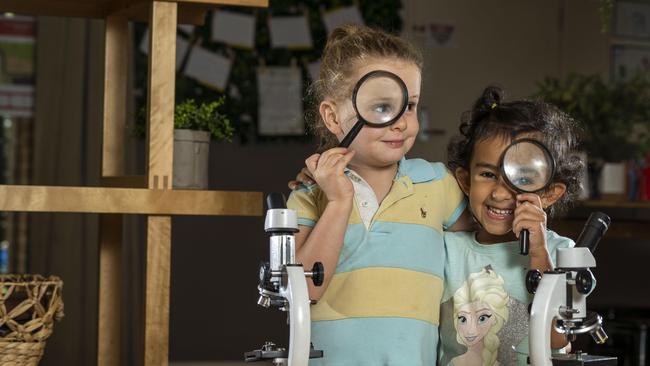Childcare transition package not enough to help struggling families
The return of paid child care has sparked calls for the funding system to be revised as thousands of families feel the financial pinch of COVID-19.

Townsville
Don't miss out on the headlines from Townsville. Followed categories will be added to My News.
The return of paid child care has sparked calls for the funding system to be revised as thousands of families feel the financial pinch of COVID-19.
From today, the Federal Government’s free child care offer has ended and it’s back to the old Child Care Subsidy system, where there will only be a partial subsidy from the government and parents pay the gap.
Acknowledging concerns that a snap back to fees could be unaffordable for many families, the Federal Government has included a transition package worth $708 million – a quarter of the sector’s pre-crisis revenue.
Childcare advocates, unions and women’s work rights advocates have criticised the end of the relief package, saying working women would be disadvantaged.
PepTalkHer founder Meggie Palmer travels the world educating companies on how to retain and promote female leadership in their workplaces, and closing the gender pay gap.
She said COVID-19 presented the Federal Government with an opportunity to change the system in a way that would boost women participation in the workforce, despite research and history showing that it’s typically women who take on more caring and unpaid responsibility at home.
“We know that when women are in the workforce and involved in business it’s great for the economy because it adds more money to GDP and gives greater diversity,”
“Maybe this working from home model that happened quiet quickly has forced innovative policy change to occur.
“There’s a level of generational change here that has to catch up because saying that women are the only ones that handle childcare responsibilities is getting old most people don’t hold that view.”

Referring to her own experience of paying for an employee’s babysitting costs in order to meet a project deadline, Ms Palmer said a revamp of the Child Care Subsidy System to be more flexible for obscure work hours seems the most logical and economically beneficial.
“The caring responsibilities don’t go away so we need to create support that can be a net positive,” she said.
“The cost of doing business in a work from home world still includes childcare.
“Women will demand that and expect it and will be voting according so I think it would be a brave government not to deliver.”
Townsville mum Emma Dala welcomed the prospect of having a hybrid funding model to better suit individual families to include in home educators and Au Pairs.
“I was a Nanny for 10 years before I had my own family and before that worked in childcare,”
“I have my diploma and all the relevant documents. The families I worked with didn’t have family around to help out.”
“When I first started the government did subsidies it but then stopped it after a few years.”
Another mum Sarah said she had to forfeit her job because the current childcare funding model meant she was losing money by working. The loss in employment also means a loss in future superannuation earnings.
“I am now $1000 a month better off than if I were working full-time after paying child care fees,” she said.
“I couldn’t believe it when I worked it out.”

The Early Childhood Education and Care Relief Package was introduced at the start of April after enrolments plummeted, threatening the viability of thousands of childcare services.
The automatic payment, which was based on enrolment figures from a two-week period in early 2020, provided 50 per cent of fee revenue.
Other than ensuring centres remained open to essential workers and vulnerable children, the guidelines left open many loop holes for people to fall through the cracks including new enrolments, and temporary visa and casual workers locked out of JobKeeper wage subsidies.
RELATED
Early end to imperfect relief package would have range of effects
Experts return fire over Gerard Rennick’s claim mums should stay at home
Childcare facing ‘imminent collapse’ if govt abandons relief package
Good Start Early Learning Regional Queensland Manager Cassy Baker said the company had grown by 16 per cent during the free childcare period which highlighted to her the value and need families place in childcare.
“The relief package isn’t perfect for all parts of our sector but there won’t be a time where we can snap back to the old system because it was designed when unemployment was heading towards 5 per cent not 10 – 15 per cent,” she said.
“And the activity test does harshly effect families who have one or more parents not working.
“One of the most important things is families will need the most support they can get when trying to return to some sort of normal.
Ms Baker said she didn’t want to see children missing out on childcare because of finances being stretched.
“I would suggest parents contact their local members because we all know how critical the first five years of a child’s life are,” Ms Baker said.
“I think we need to start reaching out to those that make the decisions because that’s who has who has impact on policy changes.”
Originally published as Childcare transition package not enough to help struggling families
